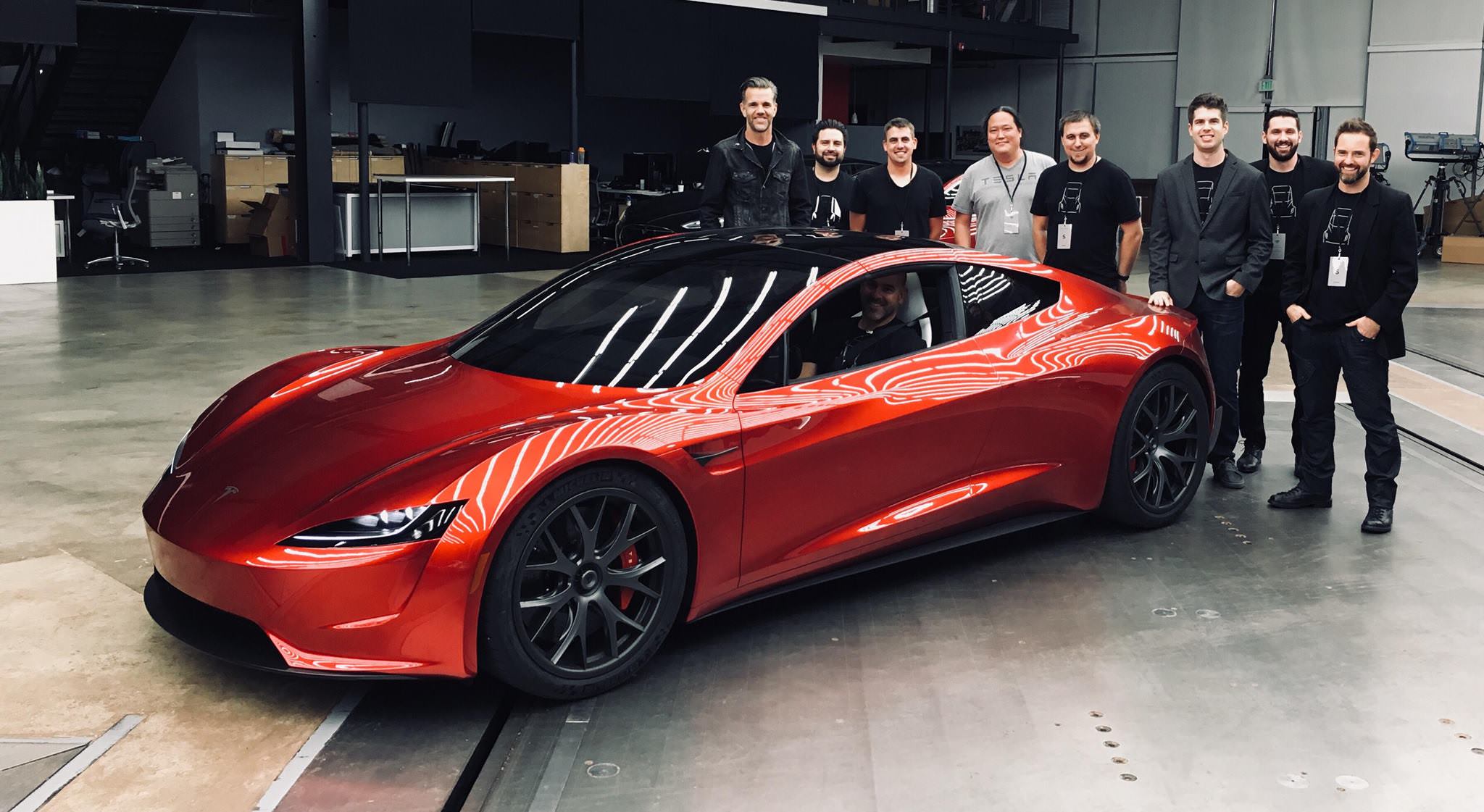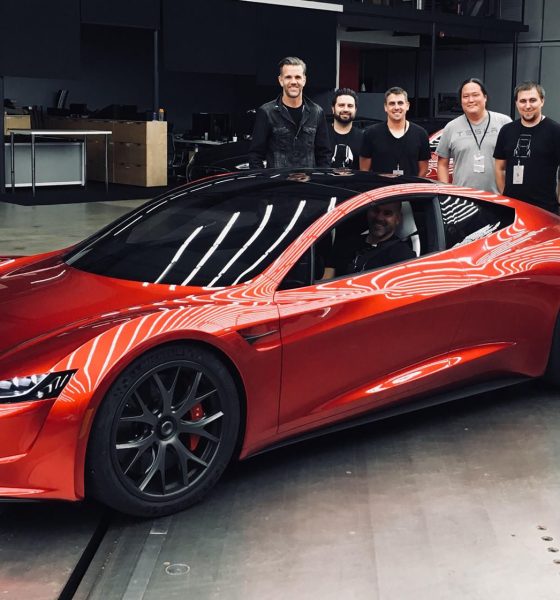Tesla has a unique success story that can be largely attributed to the creative innovations the all-electric automaker fosters at its Design Center in Hawthorne, California. Pawel Pietryka, Creative Manager of User Interface Design at Tesla, was recently interviewed by job-centric website WorkWithUs and provided some insight on what it’s like working behind the scenes with Tesla’s creative teams. Overall, there’s an “aggressive” approach to innovation that comes from the unprecedented nature of Tesla’s mission in the automotive industry.
“This place is like nowhere else,” Pietryka is quoted at the introduction to the interview. “Driving a Tesla is honestly the most fun thing you can do – and we get to design that experience every single day.”
The team creating the experience that customers have come to expect from their Model S, Model 3, and Model X vehicles, along with related products like Superchargers, is a mixed group of car designers, vehicle engineers, software engineers, ergonomics specialists, visualization specialists, clay modelers, digital modelers, and prototypers. Producing technology-centric cars known for being fun and unconventional requires a special kind of work environment that fosters creativity, and Tesla’s approach to this involves collaboration and a high bar for candidates.
“Our teams are very small and that requires everyone to be ultra-collaborative, non-competitive and just plain smart,” Pietryka commented. “We…like to dabble in creative technologies and come up with some crazy ideas. It’s always exciting to create something new that doesn’t exist.”

Tesla’s Design Studio also has an environment that produces supportive relationships among its team members which includes accessibility to management, i.e., to Franz von Holzhausen, Tesla’s Chief Designer.
“I value the camaraderie most of all. We care for each other as much as the products we design, and I don’t mean that in a corny way. You really feel something special when you’re here, everyone says that,” Pietryka detailed. “We…have this incredible ability to shift focus and realign priorities in an instant. We’re lean by design and a byproduct of that is vastly more responsibility for everyone.”
The former Art Director for Apple recounts his decision to embark on a new journey with Tesla. “The only other company that I was excited to work for was Tesla, honestly. I care deeply about our sustainability mission and our aggressive focus on innovation, and what we’re doing here is completely unprecedented. I’ve worked on many digital experiences, but none as exciting as an entire car,” notes Pietryka in his interview with WorkWithUs. “Every single day is different. It could start with a lot of meetings or start with a lot of deadlines. Unpredictable, and no two days are the same, which is pretty amazing. It’s challenging at times, for sure, but also very rewarding.”

Vehicle design is obviously very important to Tesla, and the teams that form the foundation of its success in the market have proven their worth time and time again.
“Everyone knows good design needs to be functional, simple, intuitive. But more than anything it needs to deliver a great user experience,” says Tesla’s Creative Manager, Product Designer. “That means sometimes an experience needs to be fun, sometimes unconventional, and sometimes that means beautiful typography or other unexpected characteristics. I see a lot of good product and UI designers focus too much on the former. What’s the point of good, clean design if customers are not engaged or bored by it?”
Earlier this month, classified advertising firm Auto Trader dubbed Tesla as the Most Loved Brand in the industry in its 2019 New Car Awards. A survey of 60,000 vehicle owners using 16 key metrics to rate their cars saw Tesla rise to the top of the list by a community of enthusiastic owners that were particularly passionate about the brand. Auto Trader noted that technology was a prominent theme among the feedback from Tesla’s customers, and the style and usability of that technology is a big part of why it’s so valued.
Tesla’s vehicle design has even won over car enthusiasts that are primarily fans of traditionally-powered cars. In December last year, Henry Payne of The Detroit News purchased a Long Range RWD Model 3 and was immediately enthusiastic about the all-electric midsize sedan. His comments made in an appearance on Autoline TV focused on the Model 3’s remarkable combination of driving dynamics and software integration.
“Musk re-imagined the car like Steve Jobs re-thought the phone — as a study in design minimalism that is both gorgeous and more efficient than established platforms. Privately, other automaker execs tell me they admire Tesla for innovations that are pushing the industry forward: over-the-air updates, better connectivity, better user interfaces,” Payne commented.
Tesla’s Design Studio may not be in the spotlight very often or be very forthcoming with details about its operations, but the results it produces in the company’s vehicles certainly speak well of the work that’s going on inside.
Check out the full interview with Pawel Pietryka at WorkWithUs.io

News
Tesla FSD fleet is nearing 7 billion total miles, including 2.5 billion city miles
As can be seen on Tesla’s official FSD webpage, vehicles equipped with the system have now navigated over 6.99 billion miles.

Tesla’s Full Self-Driving (Supervised) fleet is closing in on almost 7 billion total miles driven, as per data posted by the company on its official FSD webpage.
These figures hint at the massive scale of data fueling Tesla’s rapid FSD improvements, which have been quite notable as of late.
FSD mileage milestones
As can be seen on Tesla’s official FSD webpage, vehicles equipped with the system have now navigated over 6.99 billion miles. Tesla owner and avid FSD tester Whole Mars Catalog also shared a screenshot indicating that from the nearly 7 billion miles traveled by the FSD fleet, more than 2.5 billion miles were driven inside cities.
City miles are particularly valuable for complex urban scenarios like unprotected turns, pedestrian interactions, and traffic lights. This is also the difference-maker for FSD, as only complex solutions, such as Waymo’s self-driving taxis, operate similarly on inner-city streets. And even then, incidents such as the San Francisco blackouts have proven challenging for sensor-rich vehicles like Waymos.
Tesla’s data edge
Tesla has a number of advantages in the autonomous vehicle sector, one of which is the size of its fleet and the number of vehicles training FSD on real-world roads. Tesla’s nearly 7 billion FSD miles then allow the company to roll out updates that make its vehicles behave like they are being driven by experienced drivers, even if they are operating on their own.
So notable are Tesla’s improvements to FSD that NVIDIA Director of Robotics Jim Fan, after experiencing FSD v14, noted that the system is the first AI that passes what he described as a “Physical Turing Test.”
“Despite knowing exactly how robot learning works, I still find it magical watching the steering wheel turn by itself. First it feels surreal, next it becomes routine. Then, like the smartphone, taking it away actively hurts. This is how humanity gets rewired and glued to god-like technologies,” Fan wrote in a post on X.
News
Tesla starts showing how FSD will change lives in Europe
Local officials tested the system on narrow country roads and were impressed by FSD’s smooth, human-like driving, with some calling the service a game-changer for everyday life in areas that are far from urban centers.

Tesla has launched Europe’s first public shuttle service using Full Self-Driving (Supervised) in the rural Eifelkreis Bitburg-Prüm region of Germany, demonstrating how the technology can restore independence and mobility for people who struggle with limited transport options.
Local officials tested the system on narrow country roads and were impressed by FSD’s smooth, human-like driving, with some calling the service a game-changer for everyday life in areas that are far from urban centers.
Officials see real impact on rural residents
Arzfeld Mayor Johannes Kuhl and District Administrator Andreas Kruppert personally tested the Tesla shuttle service. This allowed them to see just how well FSD navigated winding lanes and rural roads confidently. Kruppert said, “Autonomous driving sounds like science fiction to many, but we simply see here that it works totally well in rural regions too.” Kuhl, for his part, also noted that FSD “feels like a very experienced driver.”
The pilot complements the area’s “Citizen Bus” program, which provides on-demand rides for elderly residents who can no longer drive themselves. Tesla Europe shared a video of a demonstration of the service, highlighting how FSD gives people their freedom back, even in places where public transport is not as prevalent.
What the Ministry for Economic Affairs and Transport says
Rhineland-Palatinate’s Minister Daniela Schmitt supported the project, praising the collaboration that made this “first of its kind in Europe” possible. As per the ministry, the rural rollout for the service shows FSD’s potential beyond major cities, and it delivers tangible benefits like grocery runs, doctor visits, and social connections for isolated residents.
“Reliable and flexible mobility is especially vital in rural areas. With the launch of a shuttle service using self-driving vehicles (FSD supervised) by Tesla in the Eifelkreis Bitburg-Prüm, an innovative pilot project is now getting underway that complements local community bus services. It is the first project of its kind in Europe.
“The result is a real gain for rural mobility: greater accessibility, more flexibility and tangible benefits for everyday life. A strong signal for innovation, cooperation and future-oriented mobility beyond urban centers,” the ministry wrote in a LinkedIn post.
News
Tesla China quietly posts Robotaxi-related job listing
Tesla China is currently seeking a Low Voltage Electrical Engineer to work on circuit board design for the company’s autonomous vehicles.

Tesla has posted a new job listing in Shanghai explicitly tied to its Robotaxi program, fueling speculation that the company is preparing to launch its dedicated autonomous ride-hailing service in China.
As noted in the listing, Tesla China is currently seeking a Low Voltage Electrical Engineer to work on circuit board design for the company’s autonomous vehicles.
Robotaxi-specific role
The listing, which was shared on social media platform X by industry watcher @tslaming, suggested that Tesla China is looking to fill the role urgently. The job listing itself specifically mentions that the person hired for the role will be working on the Low Voltage Hardware team, which would design the circuit boards that would serve as the nervous system of the Robotaxi.
Key tasks for the role, as indicated in the job listing, include collaboration with PCB layout, firmware, mechanical, program management, and validation teams, among other responsibilities. The role is based in Shanghai.
China Robotaxi launch
China represents a massive potential market for robotaxis, with its dense urban centers and supportive policies in select cities. Tesla has limited permission to roll out FSD in the country, though despite this, its vehicles have been hailed as among the best in the market when it comes to autonomous features. So far, at least, it appears that China supports Tesla’s FSD and Robotaxi rollout.
This was hinted at in November, when Tesla brought the Cybercab to the 8th China International Import Expo (CIIE) in Shanghai, marking the first time that the autonomous two-seater was brought to the Asia-Pacific region. The vehicle, despite not having a release date in China, received a significant amount of interest among the event’s attendees.










